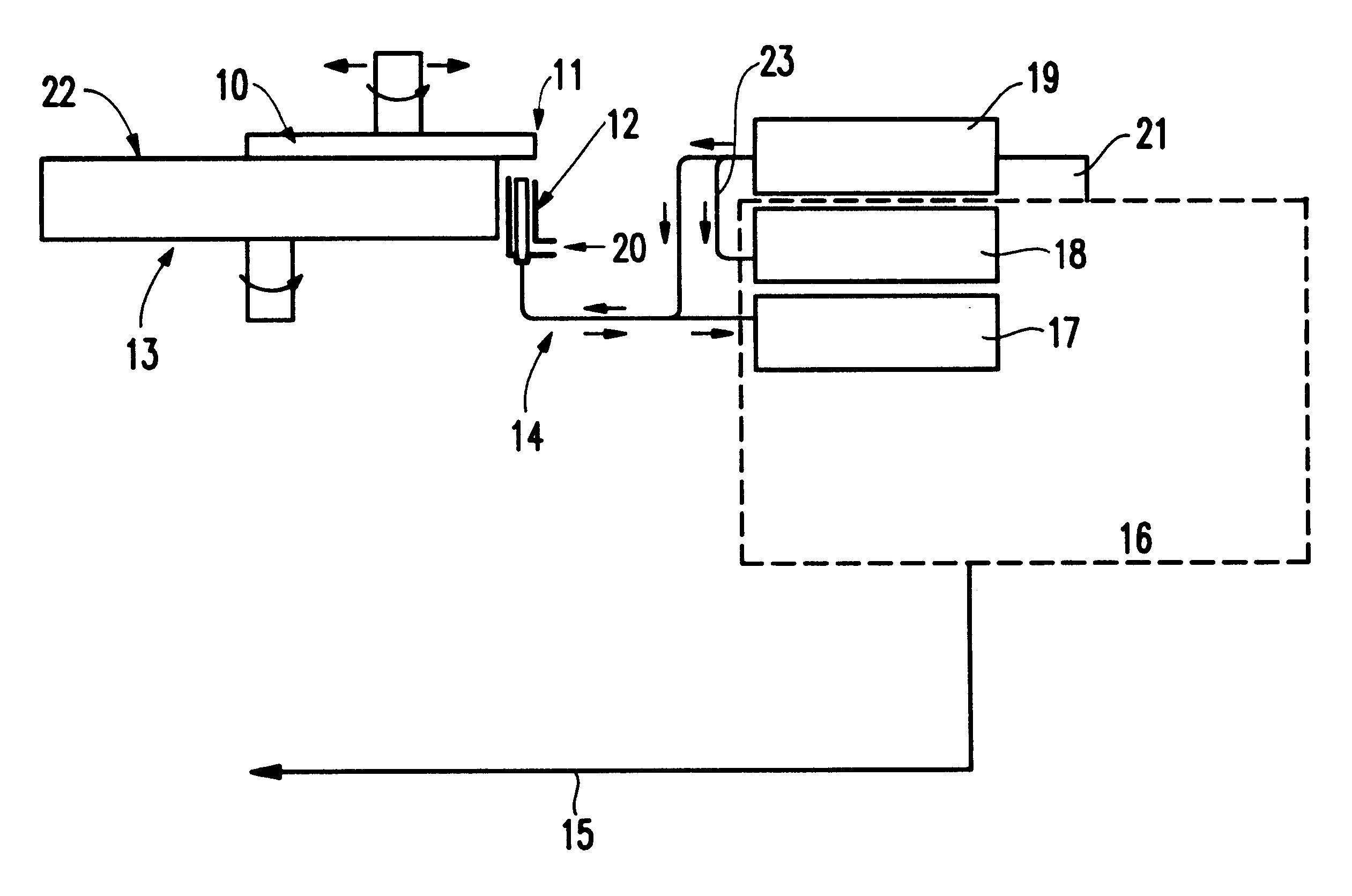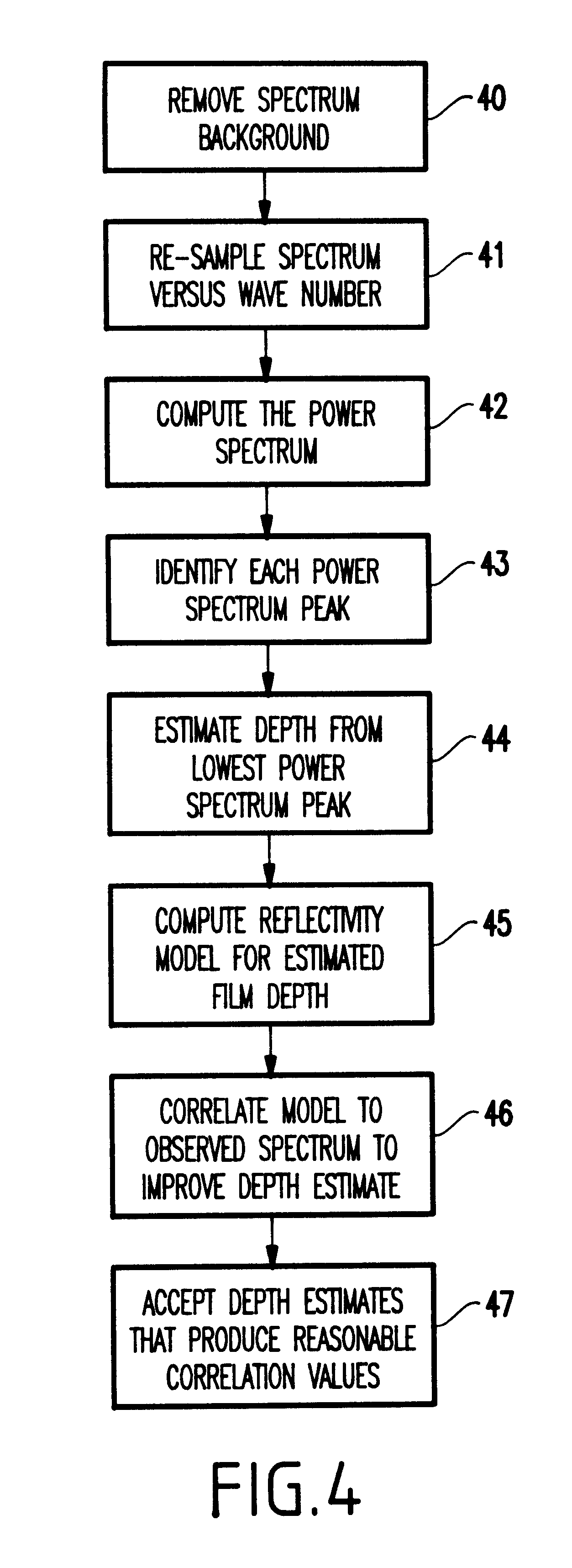Chemical mechanical polishing in-situ end point system
a technology of end point system and mechanical polishing, which is applied in the direction of grinding machine components, manufacturing tools, lapping machines, etc., can solve the problems of large wafer destruction, item being polished may have to be scrapped, and item not being properly planarized,
- Summary
- Abstract
- Description
- Claims
- Application Information
AI Technical Summary
Benefits of technology
Problems solved by technology
Method used
Image
Examples
Embodiment Construction
The invention uses optics to achieve an endpoint signal that eliminates the need for send-ahead measurements. Thus, the invention is capable of screening catastrophic failure conditions to eliminate silent failures that would otherwise cause large scale product scrap conditions. The invention can be used with any polishing system (e.g., a chemical mechanical polishing (CMP) system), such as systems for removing transparent films or systems for removing non-transparent films. The invention is not limited to polishing any specific type of device but instead is applicable to polishing or planarizing any surface. Therefore, for example, the invention could be utilized to polish any material to a given thickness, such as optical devices, glasses, metals, integrated circuit wafers or any surface with one or more semi-transparent films.
FIG. 1 illustrates a preferred embodiment of the invention. The invention includes means for polishing which applies an abrasive to an item being polished. ...
PUM
 Login to View More
Login to View More Abstract
Description
Claims
Application Information
 Login to View More
Login to View More - R&D
- Intellectual Property
- Life Sciences
- Materials
- Tech Scout
- Unparalleled Data Quality
- Higher Quality Content
- 60% Fewer Hallucinations
Browse by: Latest US Patents, China's latest patents, Technical Efficacy Thesaurus, Application Domain, Technology Topic, Popular Technical Reports.
© 2025 PatSnap. All rights reserved.Legal|Privacy policy|Modern Slavery Act Transparency Statement|Sitemap|About US| Contact US: help@patsnap.com



